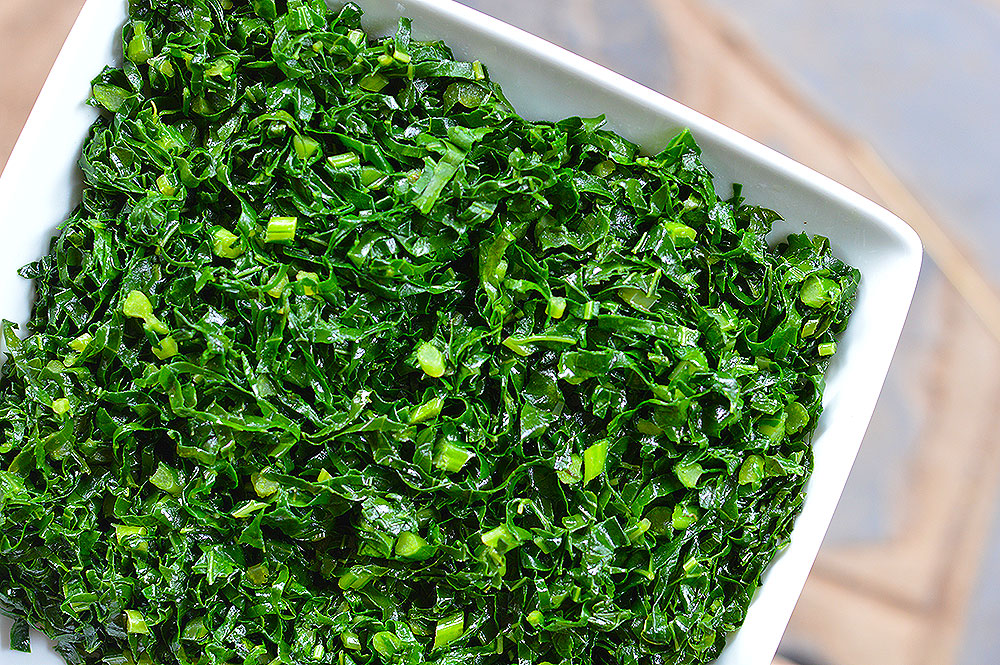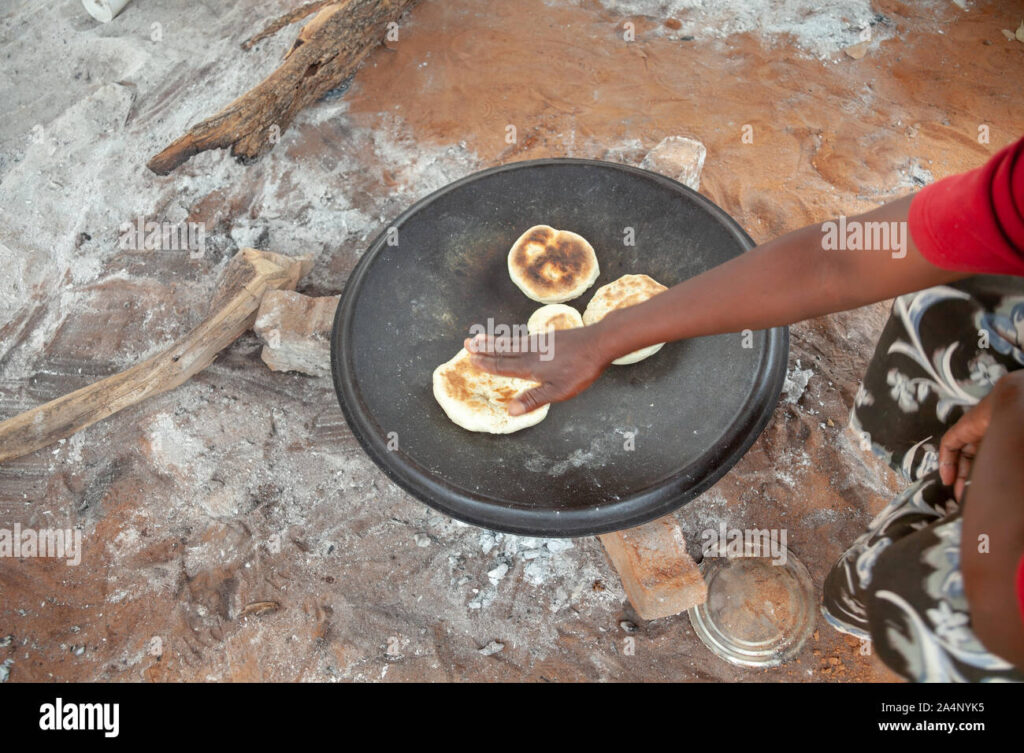The indigenes of Lesotho, known as Basotho, are renowned for being quite calm, laid-back, and inclined to lead relatively modest lives.
Their food reflects their straightforward attitude and is frequently made with few ingredients, simple cooking techniques, and no spices.
The majority of Basotho engage in subsistence farming, with maize (corn), sorghum, wheat, beans, and peas being the most popular produce.
Additionally, they raise poultry, lambs, goats, and cattle and thus, a large portion of the Lesotho dishes is influenced by these.
Families in the lowlands prepare some of the more traditional Basotho cuisines using slight alterations on the original recipes, whilst individuals in the highlands typically prepare more traditional Lesotho dishes.
They also produce foods with Western and some Asian culinary influences.
Let’s look at some of Lesotho dishes we bet you would love.
- Roasted Maize
- Papa (Stiff Porridge)
- Moroho (Leafy Green)
- Bohobe (Bread)
- Likhobe (Boiled Maize Kernels)
- Samp
- Liphaphatha (Pot-Roasted Bread)
- Makoenya (Fats Cake)
- Motoho
- Braai
- Nyekoe
- Likahare
- Lithlakoana Le Liholo
- Chicken Feets And Head
- Joala ba Sesotho
1. Roasted Maize
Roasted Maize is one of the best Lesotho dishes you would love to munch on. The green maize cobs are cooked with hot ashes by laying them close to the open fire, which is how people often cook and stay warm in the highlands.

Because few people in the lowlands use open fires at home, you can buy roasted corn from street vendors in the city or on the highway.
Due to the fact that Basotho love this snack so much, be prepared to share when you eat it in public because it’s usual for a complete stranger to ask for some.
2. Papa (Stiff Porridge)
In Lesotho, papa is a dish that practically every home enjoys. Can you actually boast of having Lesotho dishes if you haven’t had Papa.

The maize used in the highlands is carried to a nearby mill to be ground into maize meal or mealie meal.
This product has a tendency to be different in colour and flavour from that used in the lowlands, which is more refined and is purchased from a store.
It is made by heating water to a boil in a pot, adding the maize flour, and stirring with a stick known as a lesokoana until the mixture is thick, at which point the fire is turned down.
After a few minutes, stir the papa once more for it to be more solid.
This is one common dish in Lesotho and it is typically eaten with leafy greens. You can also serve it with meat, canned fish, eggs, or any other protein of your choosing for a more well-rounded dinner.
Additionally, you can eat it with your preferred beans, peas, or veggies, as well as with both fresh and sour milk.
3. Moroho (Leafy Green)
Despite not being made with maize, moroho must be placed next to papa because that is where it belongs.

Without it, you can scarcely have moroho. Leafy greens like spinach and others are used to make moroho.
Some weeds, such white geese, as well as herbs, like stinging needle and many more, are used to make moroho. Moroho is another name for cabbage.
Lepu is the most favoured moroho (summer squash leaves with young small squash). Clear the leaves of any little thorns.
The leaves should be cut and put in a pot. The squash should then be diced (the seeds don’t need to be removed because they are still extremely soft), and the pieces should be added to the cut leaves.
Cook until soft, add oil, and season only with salt. For added taste and scent, some people add chopped spring onions.
4. Bohobe (Bread)
Leqebekaone (steamed bread) and baked bread are the two main varieties of bread eaten in Lesotho.
Making round dough balls and setting them over the steamer is how steamed bread is made.

The water is then poured into the pot to the level of the steamer, brought to a boil, and then the dough is added.
Throughout the process, bread is allowed to steam in a covered saucepan, with water being added as necessary.
5. Likhobe (Boiled Maize Kernels)
Likhobe is a fantastic snack or side dish. The ingredients are just dry maize kernels boiled in salt water till tender.
6. Samp
Samp is made from dried corn kernels that have been broken up but not as thoroughly as maize meal through pounding and chopping.

The method involves removing the outer layer of the kernels and leave ng the sensitive inner layer alone. Samp is typically prepared throughout the winter months in homes and at various gatherings or celebrations.
In the Highlands, it is typically prepared by just boiling it until it is tender then salting it. Additionally, it is combined with beans before being simply boiled and salted.
The same recipe is utilized in the lowlands, however the seasoning has typically been changed for most homes and gatherings.
You still boil it until it is soft, but when it is almost done, people season it with different ingredients like Aromat, Rama margarine, coffee creamer, cream of mushroom soup, cream of chicken soup, and more.
However, it tastes finest when paired with any kind of stew, meat, and veggies.
7. Liphaphatha (Pot-Roasted Bread)
On a floured board, the dough is flattened before being cut into tiny thick rounds. Before roasting, the sliced pieces are given time to rest and grow to their largest size.

On a hot surface of a pot that has been dusted with some flour, roasting is carried out. They are covered with a clean cloth and water after being fried until they are golden brown to soften them.
Most of the time, you may get them from street vendors at bus stops in the city.
8. Makoenya (Fats Cake)
Makoenya dough is formed into little balls and occasionally rolled in flour to prevent excessive oil absorption.

The balls are dropped into a pan of extremely hot oil and fried till golden brown. They go well with polony, slap chips, sausages, tea, or coffee.
Makoenya dough is formed into little balls and occasionally rolled in flour to prevent excessive oil absorption.
9. Motoho
Motoho is a cereal made from sorghum meal that is blended with warm water to create a runny consistency.
Motoho is prepared by leaving it covered overnight to ferment. Until the porridge is cooked, add the fermented mixture to a pot of boiling water while stirring constantly.
10. Braai
A braai is a South African-inspired method of grilling meat over hot coals. Braai is the go-to dinner in Lesotho when friends or family get together for a pleasant occasion.

It can be used to cook almost anything, including meat, fish, wors (a South African sausage), garlic rolls, and more.
It is typically consumed in Lesotho with beer, papa, and chakalaka, a fiery South African vegetable relish.
Fish is flavoured, wrapped in aluminium foil, and cooked over a wood or coal fire alongside the spiced, marinated, and grilled meat.
Also read: How to prepare Cassava leaf stew, a Sierra Leonean delicacy
11. Nyekoe
The sorghum is cooked until the water boils, then the beans are added. Salt is then added after cooking the sorghum and beans until they are tender.
There are numerous Nyekoe recipes. Some people like it just the way it is, but others mix in wheat or pumpkin chunks with the sorghum and beans. Instead of being made at home, you’ll primarily find it being sold by street vendors.
12. Likahare
The tripe and intestines of larger animals, such as cattle, sheep, goats, and pigs, are carefully cleaned and boiled in water.
You take it out of the broth when it’s soft and almost done, then cut it into smaller pieces. After that, put it back in the soup and add salt. Cook until a rich gravy forms from the broth.
It can be eaten with papa, samp, or bread, particularly steamed bread.
13. Lithlakoana Le Liholo
Salt and water are used to boil sheep feet and heads for this dish. They are frequently offered by street sellers as cold meat. It is eaten as a snack either with papa or by the child alone.
14. Chicken Feets And Head
Just like the sheep feet and head, water and salt is also used to boil chicken feet and heads.
Those offered by street vendors are still prepared using only salt and water.
15. Joala ba Sesotho
Mix together equal amounts of maize meal, malt, and a small amount of wheat flour to make joala ba sesotho.
Mix the dry ingredients into a paste by adding cold water. Stirring while adding boiling water gradually. Then, chill it till it’s almost warm but not entirely.
Cover the container after adding a traditional liquid starter called tomoso. Allow the mixture to ferment for at least a day.
Boil again for many hours more, then allow it cool to barely warm. Add malt and tomoso to the mixture, then allow it to continue fermenting until bubbles appear. Your beer is prepared after it has been filtered to remove large particles.
